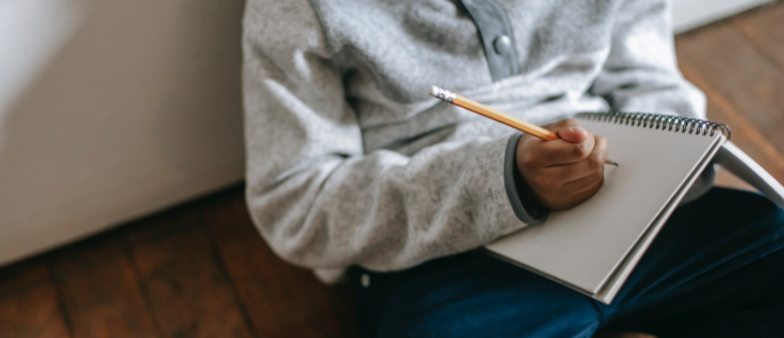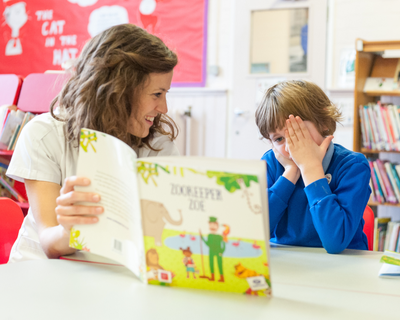COVID-19 and literacy: Educational inequality and learning loss

Concerns about the impact of the pandemic on children’s learning, health and mental wellbeing were raised early on in the lockdown, with the government opening inquiries to monitor the impact of COVID-19 on education and children’s services in late March and on white disadvantaged pupils in April 2020.
Educational organisations were quick to predict that school closures were likely to widen existing gaps in performance between pupils from lower income homes and their peers (see e.g. the Children’s Commissioner, the Education Endowment Foundation (EEF), the Education Policy Institute (EPI), the National Foundation for Educational Research (NFER) and the Sutton Trust). For example, in June 2020, the EEF produced a rapid evidence review predicting that school closures were likely to reverse progress made to close the gap in attainment between pupils from lower and higher income backgrounds over the last decade, estimating it could widen by 36% to 12.5 months (an increase of 3.3 months; EEF, 2020).
Support our work
Help us ensure 200,000 children do not fall further behind. This is an urgent appeal to support Literacy Recovery of children and young people in our most disadvantaged communities.

Supporting children’s learning during school closures
While schools were closed to most children, teachers were encouraged to teach children remotely and parents were expected to support learning at home. The Early Intervention Foundation (EIF) raised concerns about how effectively children could learn through digital platforms (Martin et al., 2020). However, a rapid evidence assessment by the EEF asserted that “pupils can learn through remote teaching”, and shared evidence-based approaches to ensure online learning interventions had the greatest impact (EEF, 2020).
However, children and young people’s experience of learning at home depended on a variety of other factors, including their school’s ability to support remote teaching; their access to resources (digital or otherwise); their parents’ time, confidence and ability to support their learning, and their own mental wellbeing and motivation to learn. From the start, remote teaching highlighted inequalities in access to the resources needed for learning in this way:
- In April 2020, the Sutton Trust reported that 60% of private and 37% of state schools in affluent areas already had an online platform in place, compared with just 23% of the most deprived schools (Cullinane and Montacute, 2020).
- Within days of schools closing, a survey of teachers found that only 2% of those working in the most disadvantaged communities believed all of their pupils would have adequate access to devices for home learning, compared to a national average of 7% (Teach First, 2020)
- In order to support some disadvantaged children, particularly those in the “most vital stages of their education, those who receive support from a social worker and care leavers” the Department for Education (DfE) announced a scheme to provide laptops through local authorities in April 2020 (DfE, 2020). By January 2021, more than 876,000 of the 1.3m promised laptops had been delivered. In addition, in England, the Department for Education (DfE) provided advice and guidance for families supporting home learning (DfE, 2020) and families could access daily lessons through platforms such as Oak Academy and BBC Bitesize.
- By the end of 2020, around 94% of UK homes had internet access, up from about 89% in 2019. However, this means 6% did not have access to the internet, increasing to 11% in lower income households (Ofcom, 2021).
- In addition, around 1 in 5 children (17%) did not have consistent access to a suitable device for online home learning during school closures, increasing to 27% of children in households classed as “most financially vulnerable” (Ofcom, 2021). Almost 2 in 5 parents (37%) said they had at least one child with no exclusive use of a device for schoolwork during the early 2021 lockdown (Teach First, 2021).
- In August 2021, the Department for Education (DfE) re-issued a legal requirement for schools to provide immediate “high quality” remote education for any pupils self-isolating due to COVID-19 (DfE, 2021). At the same time, it announced additional grant funding allowing schools to claim up to £75 per pupil over three months to support connectivity for disadvantaged pupils, for example, through the purchase dongles and routers (Education and Skills Funding Agency, 2021).
Furthermore, a survey of 257,392 UK parents found that while 65% of parents felt confident about supporting their child’s learning at home, a third (34%) did not (Parentkind, 2020). Research also evidenced the different levels of advice, resources and learning support available to families from lower and higher income homes:
- A survey of 8,738 parents in April and May 2020 found middle-class parents were more likely than working-class parents to say they had received home-schooling support (such as resources and advice) from their child’s school (YouGov, 2020).
- The Sutton Trust also found that pupils from middle-class homes were almost twice as likely to report taking part in live and recorded lessons online daily compared with working-class pupils (30% vs. 16%, Montacute and Cullinane, 2021).
- Similarly, a survey of teachers in May 2020 for the NFER found that pupils in the most disadvantaged schools were least likely to be engaged with remote learning, with 4 in 10 pupils in England not in regular contact with their teachers, a third “not engaged with their lessons”, and just 42% returning completed work (Lucas et al., 2020).
- A survey of 4,000 parents conducted by the IFS and Institute of Education (IoE) in May 2020 found children in the highest-income families spent 5.8 hours a day on educational activities compared with 4.5 hours in the lowest-income families, equivalent to a 15-day deficit in home learning by September (Andrew et al., 2020).
- A study by UCL found that during the first lockdown, children from the top 20% of income earners lost 50% of normal teaching time compared with 62% for those from the bottom 20%, and further stated: “A quarter of pupils – around 2 million children - received no schooling” (Elliot Major et al., 2021).
[1] In 2019, the EPI estimated memorably that it would take “more than 500 years” to close the gap at GCSE level
[2] See the National Audit Office, 2020 and Institute for Fiscal Studies, 2021 for critical reviews of the government’s response to preparing schools for remote learning
Summary
When schools were closed to most children at very short notice, inequalities in access to the resources needed for learning at home were quickly highlighted. It became clear that children and young people’s experiences depended on several factors. For example, less than a quarter of the most deprived schools began the first lockdown with the ability to use an existing online learning platform, compared with almost 2 in 5 state schools in affluent areas and 3 in 5 private schools.
Even with such a platform, children's ability to access learning in this way required exclusive or shared use of a suitable device, and more than 1 in 4 children in the most financially vulnerable households did not have this access. In addition, a third of parents were not confident about supporting their children's learning at home, and concerns were expressed about unequal time spent learning between children from lower and higher income households. This suggests that children and young people from disadvantaged backgrounds suffered a number of challenges to learning outside school, and that efforts to help them make up the learning they lost should be targeted and adequately resourced.
Initiatives to address the first-level digital divide by providing laptops for the most vulnerable children and young people are essential, as are those to provide access to online lessons through platforms such as BBC Bitesize and Oak Academy. Such resources have the potential to support and extend learning even when schools are open. There is also a role for the wider community, including literacy organisations and the business community. There is also a role for the wider community, including literacy organisations and the business community. We offer schools and families a wide range of support, advice, resources and training, much of which is generously funded by corporate partners, trusts, foundations and individuals.